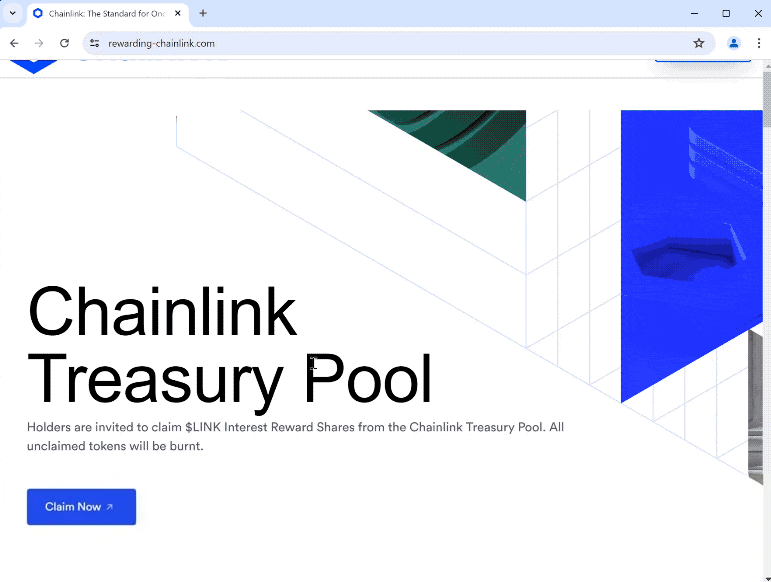Remove “Chainlink Treasury Reward” scam site
The “Chainlink Treasury Reward” scam refers to a fraudulent website (rewarding-chainlink.com) that imitates the legitimate Chainlink website. The scam site tries to trick users into connecting their cryptocurrency wallets, which activates a cryptocurrency drainer that steals all funds in the wallet. The scam site claims that users are invited to claim $LINK Interest Reward Shares from the Chainlink Treasury Pool. Those who fall for this scam may have all their funds stolen from their cryptocurrency wallets.
Chainlink is a system that allows smart contracts to be connected with information from outside the blockchain. The legitimate site for Chainlink is chain.link, but malicious actors have created a fraudulent site that imitates it. rewarding-chainlink.com is the address of the fake Chainlink site. When users enter the site, they will be shown a message saying they can claim $LINK Interest Reward Shares from the Chainlink Treasury Pool. Supposedly, if tokens are unclaimed, they will be “burnt”. The site displays a “Claim Now” button, and if users click it, they will be asked to connect their crypto wallets. If users try to connect their wallets, this action will trigger a malicious tool to activate, and it will drain all crypto funds in the wallet. This cryptocurrency drainer will automatically transfer the cryptocurrency from the victim’s wallet to one operated by malicious actors. Once funds have been stolen, it’s unlikely that victims will be able to get them back, considering transactions are irreversible.
With cryptocurrencies gaining increasing popularity, they attract investors of all levels. Less careful, novice investors are the prime targets of these types of scams are they’re not familiar with the common tricks malicious actors use to steal users’ funds.
How are cryptocurrency scams promoted?
It’s unlikely that users get redirected to rewarding-chainlink.com completely randomly. What likely happens is that users stumble upon links to these sites on social media sites, forums, in comments under certain articles, etc.
Malicious actors use various platforms to promote cryptocurrency scams, with social media platforms and sites like YouTube being particularly popular. A common method is impersonating high-profile individuals, such as Elon Musk, on social media. This is particularly easy on platform X, leading to a surge in crypto scams. The comments beneath Musk’s posts are often filled with impersonator accounts claiming he is hosting a crypto giveaway or promoting other similar scams. These impersonators frequently make profiles that appear convincing enough to mislead novice or distracted users. Their comments often include links to scams, such as the “Chainlink Treasury Reward” scam.
Notably, in 2020, many prominent Twitter accounts were compromised to promote a Bitcoin scam. Accounts that were hijacked included those of Barack Obama, Joe Biden, Bill Gates, Jeff Bezos, and Elon Musk, among others. Even accounts belonging to Coinbase, CoinDesk, and Binance were affected. When these accounts posted about hosting a Bitcoin giveaway and promising to double any cryptocurrency transferred, over 320 transactions occurred within minutes, resulting in nearly $110,000 being sent to the scammers.
YouTube is another platform frequently exploited for cryptocurrency scams. Scammers often take over channels with a substantial follower count and begin posting videos featuring Elon Musk, Tesla events, and messages promoting crypto giveaways.
Site Disclaimer
WiperSoft.com is not sponsored, affiliated, linked to or owned by malware developers or distributors that are referred to in this article. The article does NOT endorse or promote malicious programs. The intention behind it is to present useful information that will help users to detect and eliminate malware from their computer by using WiperSoft and/or the manual removal guide.
The article should only be used for educational purposes. If you follow the instructions provided in the article, you agree to be bound by this disclaimer. We do not guarantee that the article will aid you in completely removing the malware from your PC. Malicious programs are constantly developing, which is why it is not always easy or possible to clean the computer by using only the manual removal guide.

